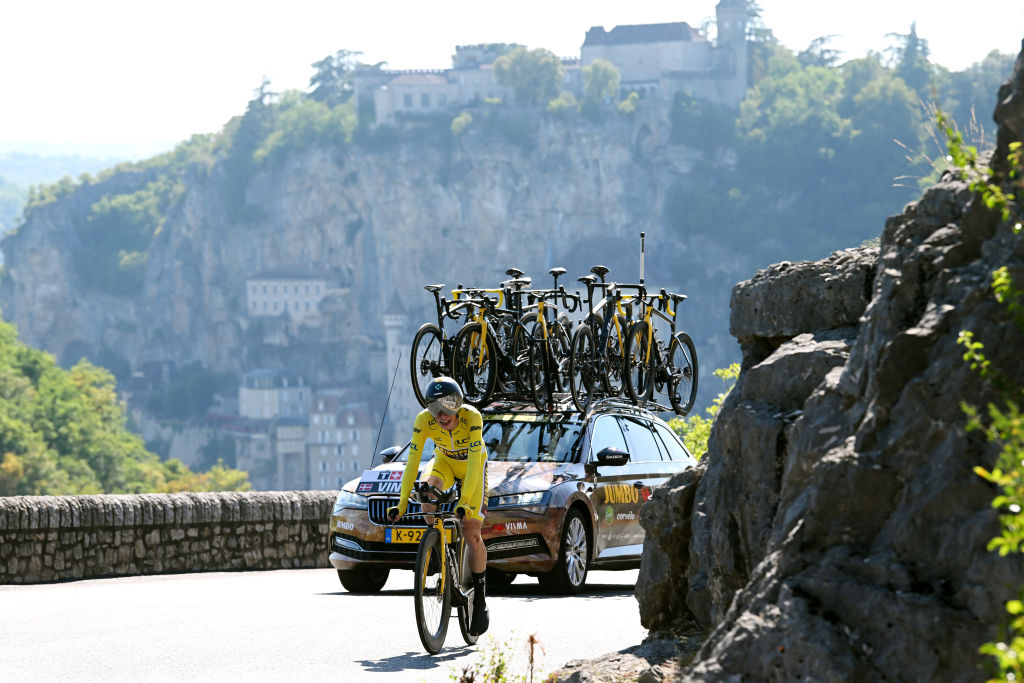After the stir caused this year by team cars packed with spare bikes in time trials, the UCI has acted to stamp out that aerodynamic trickery with a rule change.
From the start of 2023, support vehicles will have to stay 15 metres behind their time triallist, up five metres from the previous minimum of 10.
The change is intended to reduce any chance of a rider benefiting from a reduction in drag due to the presence of the trailing car.
While the benefits of having a car in front of you while riding are obvious, there is also an advantage – albeit much smaller – from having an object behind.
“Any object moving through the air pushes air with it. The pressure distribution around the object – in this case, the car – leads to the air immediately in front being pushed forwards slightly,” Richard Kelso, Adjunct Associate Professor at the University of Adelaide, explained to Cyclingnews earlier this year.
“So, it means that the larger vehicle behind or the vehicle behind the cyclist will actually be pushing the air ahead with the cyclist, so that the airflow speed around the cyclist will be smaller. It is only small but it’s enough [to make a difference].”
It’s for that reason that some riders and teams have started stacking multiple bikes onto the roof of the trailing car in recent years, in order to maximise the surface area and drag of the trailing object. Two-time world champion Filippo Ganna (Ineos Grenadiers) used to ride with one spare bike on the roof but since mid-2021 it has been packed with several bikes.
The UCI has not moved to limit the number of bikes allowed on a car roof, but it has now stipulated that the car must stay further back than the previous 10-metre rule.
“The following vehicle shall follow at least 15 meters behind the rider, shall never overtake him nor draw up level with him,” read the new regulations for 2023.
“In the case of a breakdown, technical support may be rendered only with the rider and vehicle stationary and the following vehicle shall not hinder anyone else.”
It is unclear whether there is any real remaining aerodynamic advantage of having a bike-laden car 15 metres behind. The benefit at 10 metres was already marginal and the UCI will hope the 50% increase in distance will level the playing field.
Belgian professor Bert Blocken calculated that a standard car following at 10 metres would amount to a 0.23% reduction in drag coefficient, translating to 0.078 seconds per kilometre.
The issue has sparked…
Click Here to Read the Full Original Article at CyclingNews RSS Feed…

